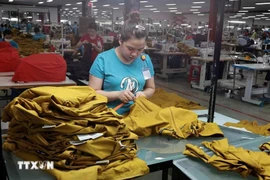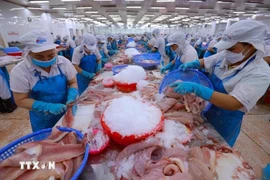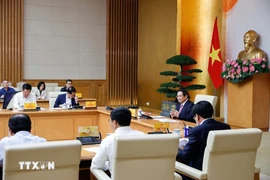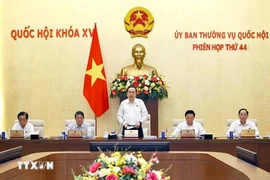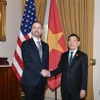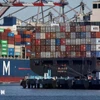Hanoi (VNA) – The US's planned imposition of heavy tariffs on Vietnamese goods presents formidable challenges for key industries while creating opportunities for enterprises to adapt and explore alternative markets, according to insiders.
With the US announcing a 10% basic import tax and reciprocal duties of up to 46% on Vietnamese goods, numerous industries including wooden furniture, textiles and garments, footwear, electronics, and seafood face severe impacts. However, many Vietnamese products are exempt from the duties, prompting businesses and industries to conduct detailed research and develop appropriate solutions.
According to Director of DMH freight forwarding joint stock company Dang Minh Hieu, the tariffs could reduce price competitiveness as increased import taxes make Vietnamese products more expensive in the US, making them less attractive compared to US domestic goods or imports from countries with preferential tariffs like Mexico and Canada. He anticipated that businesses may lose market shares if they fail to adjust their business strategies.
High tariff rates also narrow profit margins. If businesses absorb the tax increase rather than passing it on to customers, profits will decrease, especially in industries with low profit margins such as textiles and footwear. Highly-taxed items like steel, aluminum, electronics, and wooden products also create a higher level of risk for businesses. If Vietnam ships a significant volume of the products, those enterprises will put under great pressure, Hieu explained.
However, along with the negative aspects of high US tariffs, there are positive opportunities for Vietnamese businesses if they are able to capitalise on the advantages of the signed free trade agreements, promote value chain upgrades, and leverage the opportunities to replace Chinese goods exported to the US.
Specifically, if the US increases tariffs on Chinese goods, Vietnamese businesses could benefit from order shifts in industries like electronics and wood products. Exports to the US can still increase despite high tariffs. Hieu said that the duty pressure also forces forces businesses to improve quality and shift to higher-value products to offset costs.
Besides, by utilising preferential treatment from such free trade pacts as the EU – Vietnam Free Trade Agreement and the Comprehensive and Progressive Agreement for Trans-Pacific Partnership, firms could reduce dependence on the US market.
He suggested enterprises optimise costs by applying advanced technologies and automation or find cheaper raw materials within FTA blocs, such as textile materials from ASEAN. Businesses need to leverage the "Made in Vietnam" mechanism to avoid trade defence duties by proving that goods have clear origin and are not re-exported Chinese products.
Sharing the same viewpoint, Chairman of the Vietnam National Textile and Garment Group (Vinatex) Le Tien Truong held that Vietnamese businesses need to stay calm and proactive in preparing solutions in response to the tariff policy on textile exports. Vietnam will need to increase the purchase of US products to create a better position when negotiating tariffs.
Increased tariff rates could potentially reduce aggregate demand in the short term, resulting in fewer orders than expected, Truong added.
Regarding the high US tariffs, CEO of May 10 Corporation Nguyen Thi Phuong Thao recommended the Government to provide more support for textile and garment companies through tax and customs policies.
She also shared that with 60% of its total exports shipped to the US, the company began diversifying both markets and supply chains to reduce dependence on the US and China. Various cost-saving measures have been implemented while investments in technology have been made to boost productivity and competitiveness.
The corporation is also focusing on the domestic market to balance trade portfolios and keeping close tabs on material sourcing and policy developments to work out rational production and business strategies, she added./.
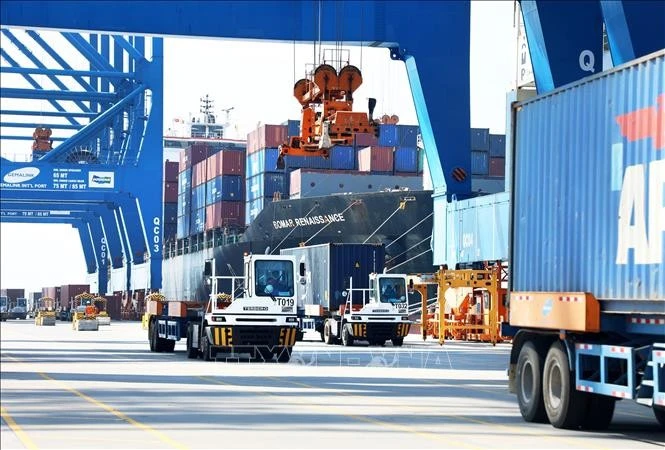
See more
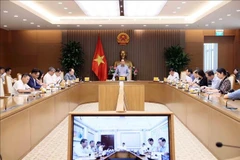
National committee meets to accelerate ODA, concessional loan disbursement
Between 2021 and 2024, the annual average disbursement rate was just 52%. In the first four months of 2025, the rate was only 4.6%, significantly lower than the national average disbursement rate for public investment of approximately 8% during the first quarter.

Reference exchange rate down 37 VND at week’s beginning
The State Bank of Vietnam set the daily reference exchange rate for the US dollar at 24,886 VND/USD on April 14, down 37 VND from the last work day of the previous week.
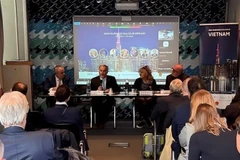
Italy's Liguria region eyes stronger economic cooperation with Vietnam
An Asia-Vietnam business dialogue in Italian city of Genoa featured expert insights into regional trade dynamics, real-world business case studies, and analysis of Vietnam’s fast-evolving key sectors — from manufacturing to technological innovation — amid shifting global trends.
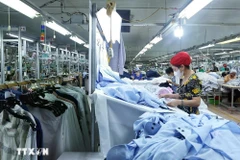
Gov’t negotiating team for trade talks with US set up
The Government negotiating team on trade issues with the US is headed by Minister of Industry and Trade Nguyen Hong Dien.

50 years of national reunification: Xuyen Moc thrives as tourism hub in southeastern region
In November last year, Loc An wharf was recognised as a special national historical site, highlighting its importance during Vietnam's resistance war against American forces.
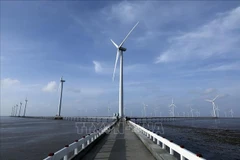
Vietnam developing wind turbine blades that align with weather conditions
Vietnam is focusing on the development and application of green energy technologies, including the technology surrounding wind turbine blades and solar panel production, as it wants to fully tap its advantages in geography and climate to develop renewable energy.
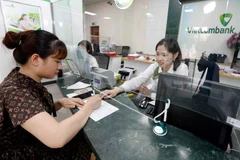
Seminar discusses how to successfully restructure banking sector
Experts explored the root causes behind both the successes and failures of Vietnam’s bank restructuring efforts, while proposing practical measures to enhance their effectiveness going forward at a seminar in Ho Chi Minh City on April 11.

Vietnam, China enhance business connectivity
In the first quarter of 2025, bilateral trade between Vietnam and China reached 51.2 billion USD, up 17.5% year-on-year, with expectations for continued growth throughout the year.

Latin American media hail Vietnam’s breakthrough in US trade talks
According to the Latin American outlet, the most outstanding achievement in the recent intensive negotiation days was Vietnam’s special task force convincing the US side to agree to begin negotiations on a bilateral trade agreement, an issue Washington had previously avoided on numerous occasions.
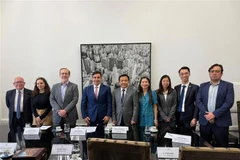
Vietnam, Brazil promote cooperation potential
During his visit from April 7-10, the Ambassador held meetings with the Government of Sao Paulo State, the Federation of Industries of the State of Sao Paulo (FIESP), and Friboi -a subsidiary of the JBS Group- to explore opportunities to further strengthen bilateral trade and investment, with a focus on Sao Paulo.
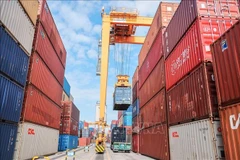
Ministry calls for stricter control over imported materials amid tighter origin rules
Document No. 2515/BCT-XNK highlights the fast-changing and unpredictable landscape of global trade, particularly in light of the US's ongoing tariff policies affecting many countries, including Vietnam.
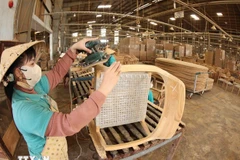
Vietnam’s forestry sector ramps up competitiveness to meet export targets
Vietnam’s forestry industry is setting its sights on reaching an ambitious export target of USD 18 billion in 2025.

Vietnam taps e-commerce boom to supercharge export growth
In recent years, the number of Vietnamese enterprises engaging in online exports has climbed sharply, mirroring the country’s fast-paced digital transformation.
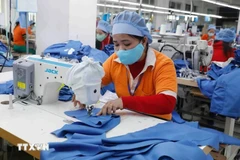
Vietnam’s labour force grows by half a million annually: report
The labour force aged 15 and above reached 52.9 million people in Quarter 1, showing a decrease of 230,700 people compared to the previous quarter but an increase of 532,000 people year-over-year.
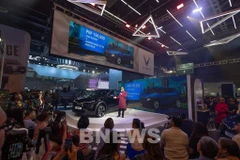
VinFast launches VF 6 EV with free charging in Philippines
Available in Eco and Plus variants, the VF 6 is priced at 1,419,000 PHP and 1,610,000 PHP, respectively (24,700–28,100 USD), with deliveries of the Eco version set to begin in May 2025.
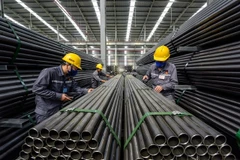
Vietnam Trade Office warns of trade diversion, affecting Vietnamese exports to EU
Being cautious and proactive at this time will help Vietnam protect its exports to the EU and preserve the international reputation of Vietnamese goods amid an increasingly volatile global trade landscape.
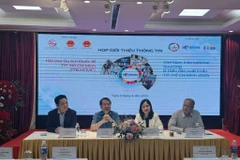
Vietnam to host international supply chain connectivity event
According to the organisers, more than 300 international purchasing delegations from 60 countries and territories will attend the sourcing fair, supported by over 60 Vietnamese trade offices worldwide.
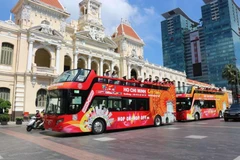
Representatives from over 30 countries, territories to join HCM City travel expo
The ITE HCMC 2025 will feature 16 main activities, including trade connections, forums, conferences, and workshops.

Vinfast delivers 12,100 EVs in March, leads Vietnam market
March marked the official launch of pre-orders for VinFast’s Green mini EV series, distributed via GSM and authorised dealerships nationwide. Within just 72 hours, GSM received an impressive 45,813 pre-orders for the Minio Green, Herio Green, Nerio Green, and Limo Green models, setting a new domestic market record.

Vietnam’s auto sales hit high gear, surge 47% in March
One standout trend was the sharp rise in completely built-up (CBU) imports, which saw sales climb 60% to 16,863 units. Meanwhile, domestically assembled vehicles also posted a gain of 35%, with 14,887 units delivered to customers.
